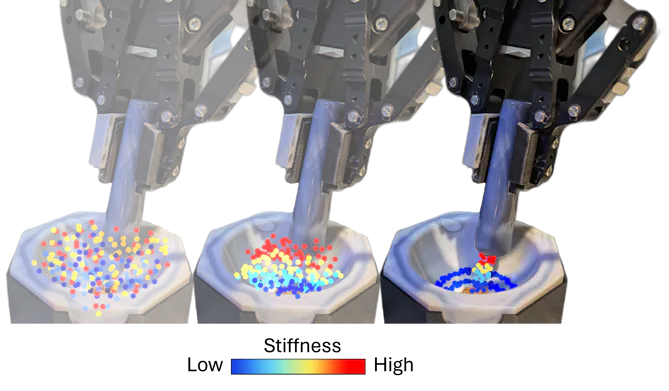Learning Diffusion Policies from Demonstrations For Compliant Contact-rich Manipulation

Robots hold great promise for performing repetitive or hazardous tasks, but achieving human-like dexterity, especially in contact-rich and dynamic environments, remains challenging. Rigid robots, which rely on position or velocity control, often struggle with maintaining stable contact and applying consistent force in force-intensive tasks. Learning from Demonstration has emerged as a solution, but tasks requiring intricate maneuvers, such as powder grinding, present unique difficulties. This paper introduces Diffusion Policies For Compliant Manipulation (DIPCOM), a novel diffusion-based framework designed for compliant control tasks. By leveraging generative diffusion models, we develop a policy that predicts Cartesian end-effector poses and adjusts arm stiffness to maintain the necessary force. Our approach enhances force control through multimodal distribution modeling, improves the integration of diffusion policies in compliance control, and extends our previous work by demonstrating its effectiveness in real-world tasks. We present a detailed comparison between our framework and existing methods, highlighting the advantages and best practices for deploying diffusion-based compliance control.